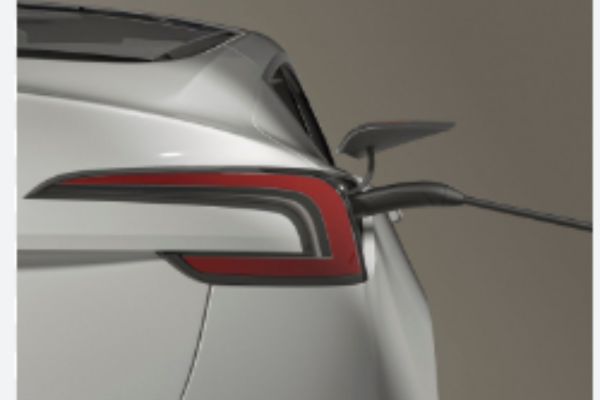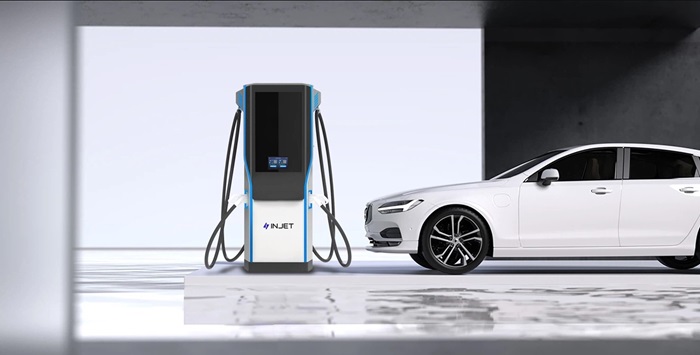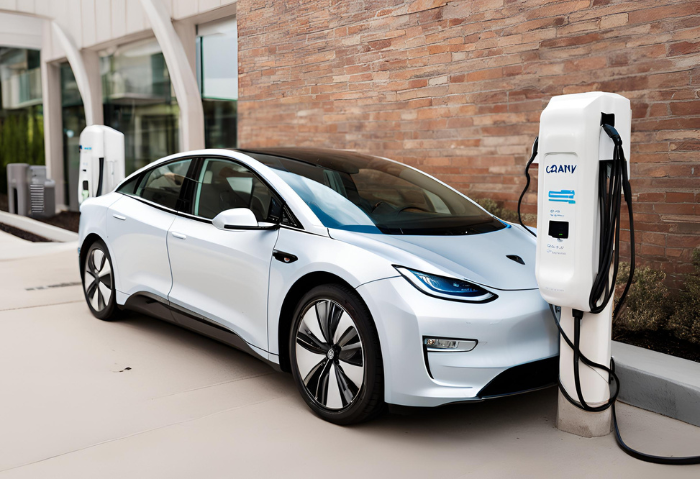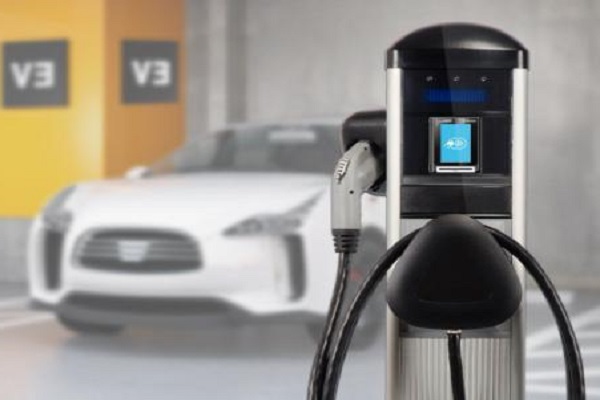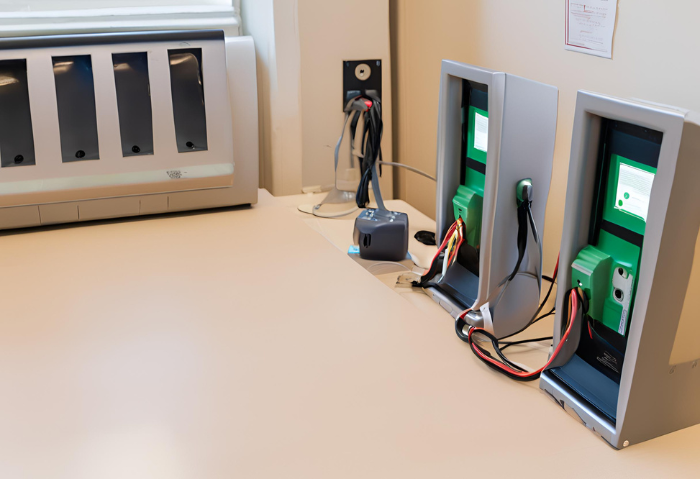The Emporia Smart EV Charger EMEVSE1 is the best choice for your home.
The Emporia Smart EV Charger (EMEVSE1) is an innovative and efficient solution for electric vehicle owners seeking reliable home or commercial charging. With advanced features such as Wi-Fi connectivity and remote control via the Emporia app, this Level 2 charger offers convenience and flexibility. Its competitive pricing and user-friendly design make the Emporia Smart EV Charger EMEVSE1 an excellent choice for enhancing your EV charging experience.
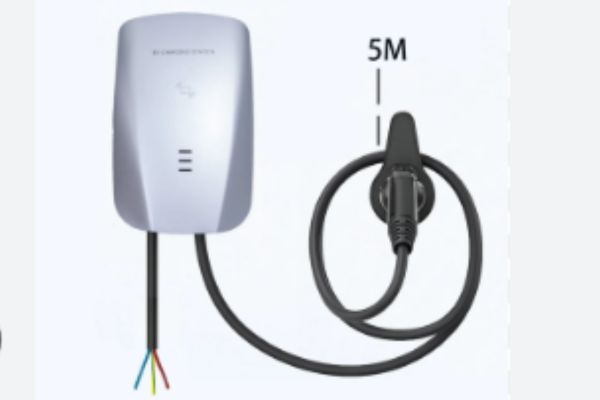
The Emporia EV Charger: An Overview
Emporia EV chargers are a pivotal component in the rapidly expanding landscape of electric vehicles (EVs). Designed to meet the charging needs of EV owners, Emporia offers Level 2 charging solutions that cater to both residential and commercial settings.
At the heart of Emporia’s offerings is Level 2 EV charging technology, which represents a crucial advancement in the EV market. Unlike standard Level 1 chargers, which typically come with EVs and use a standard household outlet, Level 2 chargers provide a faster and more efficient charging experience. They require a 240-volt electrical circuit, enabling them to charge an EV significantly quicker than Level 1 chargers.
The significance of Level 2 EV charging solutions lies in their ability to reduce charging times, making EV ownership more convenient and practical for consumers. With Level 2 chargers, EV owners can replenish their vehicle’s battery much faster, allowing for more flexibility in daily usage patterns. This is particularly beneficial for those who rely on their EVs for commuting or travel and cannot afford prolonged charging times.
Moreover, Level 2 chargers are essential for supporting the continued growth of the EV market. As more consumers transition to electric vehicles, the demand for efficient and accessible charging infrastructure continues to rise. Emporia’s Level 2 EV chargers play a vital role in meeting this demand by providing reliable and user-friendly charging solutions for EV owners, whether at home, work, or public charging stations.
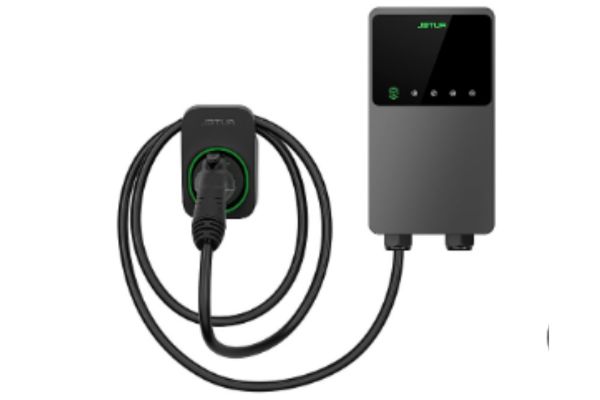
This is a review of the Emporia Smart EV Charger (EMEVSE1).
Description and Key Features
For residential and commercial use, the Emporia Smart EV Charger (EMEVSE1) is a Level 2 EV charger. It provides a reliable and efficient charging solution for electric vehicle owners. Key features include:
- High Charging Power: Provides up to 40 amps of power, significantly reducing charging time compared to Level 1 chargers.
- Wi-Fi Connectivity: Enables remote monitoring and control via the Emporia app.
- Durability: Built to withstand various weather conditions, it is suitable for both indoor and outdoor installations.
- Safety Features: This includes a variety of safety mechanisms, such as overcurrent protection, overvoltage protection, and ground fault detection.
Detailed Specifications and Design Aesthetics
The EMEVSE1 charger boasts a sleek, modern design that complements both residential garages and commercial parking areas. Its compact and robust build ensures longevity and resilience against environmental factors.
Key specifications include:
- Voltage: 240V
- Current: Adjustable from 16A to 40A
- Cable Length: 24 feet
- Connector: SAE J1772, compatible with most EVs.
- Dimensions: 13.5 x 6.8 x 3.2 inches.
Build quality and installation
The build quality of the Emporia Smart EV Charger EMEVSE1 is exceptional, featuring high-grade materials that ensure durability and reliability. The weather-resistant design makes the charger suitable for outdoor installations without the need for additional protection.
Installation Requirements:
- Electrical Requirements: We recommend a dedicated 240V circuit with appropriate amperage (up to 50A).
- Wall-mounted or pedestal installation options are available.
The installation process is straightforward, typically requiring professional installation to ensure compliance with local electrical codes and optimal performance.
Functionality and user interface
The Emporia Smart EV Charger EMEVSE1 excels in functionality and user experience.
Charging Speed and Efficiency:
- Power Output: Adjustable between 16A and 40A, allowing for flexible and efficient charging.
- Compatibility: Works with all electric vehicles equipped with the SAE J1772 connector, including most EV models on the market.
User Interface and Control Features:
- Emporia App: The Emporia app, available on iOS and Android, allows you to control and monitor the charger. The app provides real-time data on charging status, energy consumption, and scheduling options.
- Control Features: Users can set charging schedules, monitor charging sessions, and receive notifications about the charging process.
Smart home integration
With smart home integration in mind, the EMEVSE1 connects seamlessly with a variety of smart home systems.
Compatibility with Smart Home Systems:
- Amazon Alexa and Google Assistant allow voice control of the charging process.
- IFTTT Integration: Enables creating custom automation and interactions with other smart home devices.
Remote Management Features:
- Remote Monitoring: You can check the status and progress of your EV charging from anywhere.
- Energy Management: Optimize charging based on energy rates and usage patterns, potentially reducing electricity costs.

Economic and market considerations
Market positioning and competitor comparison
Strategically positioned in the EV charging market, the Emporia Smart EV Charger EMEVSE1 offers both residential and commercial users a high-performance, cost-effective solution. It combines advanced features with competitive pricing, appealing to a wide range of consumers, from eco-conscious homeowners to businesses looking to support their EV fleets.
- Growing EV Adoption: As electric vehicles become more popular, there is a growing demand for reliable and efficient home and public charging solutions.
- Government Incentives: A variety of incentives and rebates for EV charging infrastructure are encouraging more consumers to install home chargers.
- Smart Home Integration: As smart home technology becomes more prevalent, consumers are seeking chargers that can seamlessly integrate with their existing systems.
Competitor Comparison:
- Tesla Wall Connector: Known for its high efficiency and seamless integration with Tesla vehicles. However, its design primarily caters to Tesla models, which may limit its universal appeal.
- ChargePoint Home Flex offers similar features like Wi-Fi connectivity and adjustable amperage but comes at a higher price point. It’s known for its robust network of public charging stations, which can be a deciding factor for some users.
- JuiceBox 40: Another strong competitor with comparable features, such as smart home integration and high power output. It is slightly more expensive but offers premium build quality and extensive app functionality.
The Emporia EMEVSE1 distinguishes itself with a balance of affordability, robust features, and smart home compatibility, making it a versatile option in a competitive market.
Cost-Benefit Analysis
Initial Cost:
- Emporia EMEVSE1: Typically priced between $399 and $499, it is one of the more affordable Level 2 chargers with advanced features.
- Installation costs vary depending on the electrical setup and local labor rates, usually ranging from $200 to $800.
Potential Savings:
Government Incentives and Rebates: Federal and state programs often offer rebates or tax credits for the purchase and installation of EV chargers, which can significantly offset the initial costs. For example, the U.S. federal tax credit offers up to 30% off the cost of purchasing and installing an EV charger, as well as up to $1,000 for residential installations.
Reduced Fuel Costs: Switching from gasoline to electricity can save EV owners hundreds of dollars annually, depending on local electricity rates and driving habits.
Time Savings: Faster charging times with Level 2 chargers reduce the downtime for EVs, enhancing convenience and making EV ownership more practical.
Long-Term Value:
- Energy Efficiency: Smart charging features allow users to charge during off-peak hours, reducing electricity costs.
- Durability and Reliability: A high-quality build ensures longevity, reducing the need for frequent replacements or repairs.
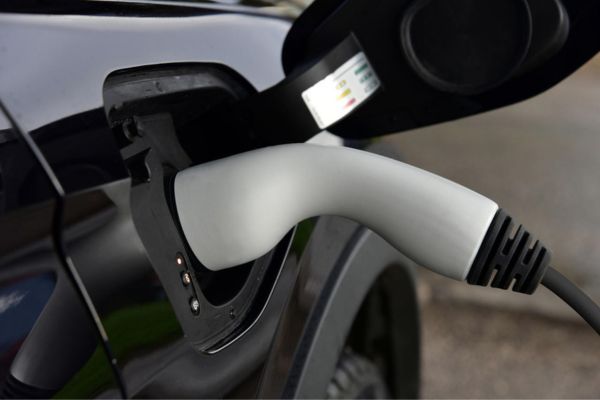
Installation and technical details
Detailed Installation Guide
Step-by-step installation process
Preparation:
- Tools Required: Drill, screwdriver, wire strippers, voltage tester, level, mounting screws, conduit, and necessary electrical wiring.
- Materials: Emporia Smart EV Charger EMEVSE1, mounting bracket, and appropriate electrical components (breaker, conduit, and wires).
- Expertise Needed: Basic electrical knowledge is required. We recommend professional installation by a certified electrician to ensure safety and compliance with local codes.
Choose Installation Location:
- Select a location near your electrical panel for convenience.
- Ensure the spot is within reach of the charger’s 24-foot cable to the vehicle’s charging port.
- The chosen location should be easily accessible and allow for ventilation.
Turn Off Power: To ensure safety during installation, shut off the main power supply at the electrical panel.
Mount the charger.
- Use the included mounting bracket and screws to secure the charger to the wall.
- Using a level tool, ensure that the unit is level.
Electrical Wiring:
- Install a dedicated 240V circuit breaker in your electrical panel.
- Run conduit and appropriate gauge wire from the panel to the charger location (consult the charger’s manual for specific wire gauge recommendations based on amperage).
- Following the wiring diagram in the installation manual, connect the wires to the charger.
Connect and Secure Wiring:
- Separate the insulation from the wire ends.
- Connect the wires to the corresponding terminals inside the charger (usually labeled for ground, neutral, and hot wires).
- Tighten all connections securely and ensure there are no loose wires.
Mount the Charging Cable Holder: Install the cable holder near the charger for convenient storage of the charging cable when not in use.
Power On and Test:
- Restore power at the electrical panel.
- Test the charger by plugging it into your EV and ensuring it starts charging.
- Check for any error messages or issues indicated by the charger’s LED lights.
Safety and certification
Safety Features:
- Overcurrent Protection: The charger automatically shuts off if the current exceeds safe levels, preventing damage to the EV and the charger.
- Overvoltage Protection: Protects the charger and connected EV from voltage spikes.
- Ground Fault Protection: Detects any ground faults and shuts off power to prevent electrical shock.
- Temperature Monitoring: To prevent overheating, the charger includes temperature sensors that shut down if temperatures become unsafe.
Certifications:
- The Emporia Smart EV Charger EMEVSE1 is UL listed, ensuring that it meets the strict safety standards set by Underwriters Laboratories. This certification confirms the charger’s safety risk testing and compliance with industry standards.
- Energy Star Certified: Indicates that the charger is energy efficient, reducing energy consumption and operating costs.
- FCC Certification: Ensures that the charger’s electronic components comply with Federal Communications Commission standards for electromagnetic interference, ensuring it won’t interfere with other electronic devices.
Implications of certifications:
- Consumer Confidence: Certifications provide assurance to consumers that the product is safe and reliable.
- Insurance Compliance: Some insurance policies require that installed electrical devices be UL listed to ensure safety and compliance.
- Energy Efficiency: Energy Star certification indicates lower operational costs and better energy use, which is environmentally friendly.
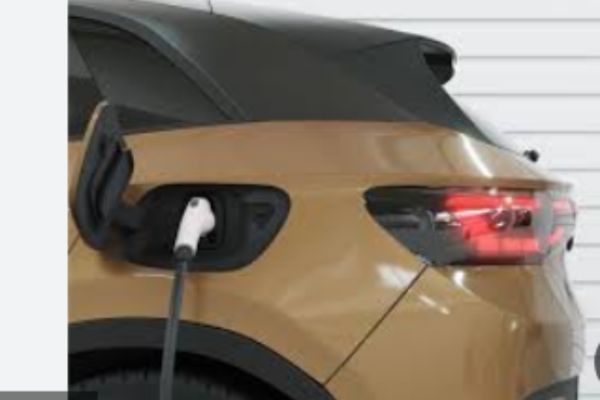
This article discusses the practical applications and troubleshooting for the Emporia Smart EV Charger EMEVSE1.
Common Usage Scenarios
Residential Applications:
- Homeowners: The Emporia Smart EV Charger EMEVSE1 is ideal for homeowners who need a reliable and efficient way to charge their electric vehicles. Installing it in a garage or on an exterior wall provides convenient access for daily charging needs.
- Airbnb Properties: Offering an EV charger can attract guests with electric vehicles, providing an added amenity that enhances the property’s appeal. The EMEVSE1’s user-friendly features and remote monitoring via the Emporia app make it easy for property owners to manage and offer this service.
Commercial Applications:
- Office Buildings: Businesses can install the EMEVSE1 in parking lots or garages, promoting sustainability and employee satisfaction.
- Retail Locations: To attract customers, shops and malls can provide EV charging, encouraging longer visits and increasing business.
- Multi-unit dwellings: Apartment complexes and condominiums can offer EV charging as a perk for residents, potentially increasing property value and tenant retention.
Troubleshooting and maintenance
Common Issues and Solutions
| Problem | Cause | Solution |
| Main Breaker Tripping | Overloaded circuit, faulty wiring, defective breaker | Ensure a dedicated circuit. Check/repair wiring. Replace the breaker if it’s old or faulty. |
| Reduced Amperage | Settings adjustments, voltage drops, and thermal limits | Verify the amperage setting in the Emporia app. Check the voltage supply (240V). Ensure proper ventilation if overheating. |
| Charger Not Powering On | There are power supply issues, faulty wiring, and internal charger faults. | Confirm the breaker is on. Check the voltage at the terminals. If power is present but the charger isn’t working, contact Emporia Support. |
| Charging sessions were interrupted. | Issues with connectivity, EV settings, and power fluctuations are present. | Verify a stable Wi-Fi connection. Check the EV’s charging settings for compatibility. Use a surge protector if you are experiencing power fluctuations. |
Maintenance Tips:
- Regular Inspection: Periodically inspect the charger, cables, and connectors for any signs of wear or damage.
- Cleanliness: Keep the charger and surrounding area clean and free of debris. Use a soft cloth to wipe down the charger unit and cable.
- Firmware Updates: Regularly check for firmware updates through the Emporia app to ensure the charger is running the latest software with all features and improvements.
- Secure Connections: To prevent overheating or electrical faults, regularly check that all electrical connections are tight and secure.

Advanced Technical Specifications and Environmental Impact
To discuss the advanced technical specifications and environmental impact of an electric vehicle (EV) charger, we can break down the information into two main sections:
Advanced Technical Specifications
- Voltage and amperage: These are critical for determining the charger’s compatibility with various vehicles and its charging speed. For example, chargers might range from Level 1 charging at 120 volts and 15-20 amps (providing 3-5 miles of range per hour) to Level 2 chargers at 240 volts and up to 40 amps (offering 25–30 miles of range per hour). High-powered DC fast chargers can operate at higher voltages and amperages, dramatically reducing charging time.
- Connectivity and Smart Features: Includes details on Wi-Fi or Bluetooth connectivity, app integration for monitoring and control, and compatibility with smart home systems.
- Safety Features: Information on built-in protections such as ground fault circuit interrupter (GFCI) protection, overcurrent protection, and weather resistance.
Environmental Impact
- Eco-Friendly Features: This could include the use of sustainable materials in the charger’s construction, energy efficiency ratings, and features that reduce energy waste, such as adjustable amperage or scheduled charging during off-peak hours.
- Impact on the Electric Grid: Discussion around how the charger manages demand from the grid, such as features that allow for load balancing, integration with renewable energy sources, and participation in grid services like demand response, which helps stabilize the grid during peak times.
Consumer Insights and Reviews
To provide a detailed overview of consumer insights and reviews for a specific electric vehicle (EV) charger and compare it to alternatives like ChargePoint and Grizzle-E, we can follow these steps:
User reviews and community feedback:
- Examine user reviews from well-known retail websites that sell the charger.
- Gather feedback from community forums dedicated to EVs, where users often discuss their experiences with various chargers.
The following are insights gathered from community forums and customer testimonials:
- Look at the product’s website and third-party sites for testimonials.
- Explore dedicated EV forums and social media groups for in-depth discussions and personal experiences shared by EV owners.
Comparative Analysis with Alternatives:
Pros and cons compared to ChargePoint:
- Pros: We would highlight any unique features offered by the charger, such as faster charging speeds or better durability, that ChargePoint does not offer.
- Cons: Consider aspects where ChargePoint might excel, such as wider availability, a more established network, or advanced technology.
Pros and Cons Compared to Grizzle-E:
- Pros: Look for features such as superior build quality, ease of installation, or cost-effectiveness that might give it an edge over Grizzle-E.
- Cons: Identify areas where Grizzle-E might be superior, such as ruggedness, high power output, or pricing.

Support and additional services
When evaluating the support and additional services for an electric vehicle (EV) charger, focusing on the warranty, customer support, and certified installation options is essential. Here’s a detailed breakdown:
- Warranty and extended support options:
- Standard Warranty: Most EV chargers come with a manufacturer’s warranty that typically covers defects in materials and workmanship for a period ranging from one to three years. Verify the warranty’s coverage for the charger’s charging unit, cable, and connectors.
- Extended Warranties: To extend the charger’s coverage beyond the standard warranty, some manufacturers and retailers offer extended warranty plans for purchase. These extended plans may also include broader coverage, such as support for parts and labor in case of failure.
- Customer Support Services: Details about customer support availability, such as 24/7 hotline numbers, online chat support, and email assistance. Additionally, we might discuss the availability of mobile apps or websites where users can troubleshoot problems, update charger software, or manage settings.
- Certified Installation Partners:
- Certified Installers: Many EV charger manufacturers recommend or require installation by certified professionals to ensure safety and compliance with local electrical codes. Information about how to find certified installers in your area—often available on the manufacturer’s website—would be crucial.
- Partnership Networks: Discussing a charger manufacturer’s network of partnerships with installation providers or companies offering additional services such as electrical upgrades or maintenance. These partnerships can often provide a smoother installation and operational experience.
- Installation Support: Additional support options may include site assessments before installation to ensure that the location supports the charger’s technical requirements, as well as post-installation support to address any issues that arise immediately after setup.
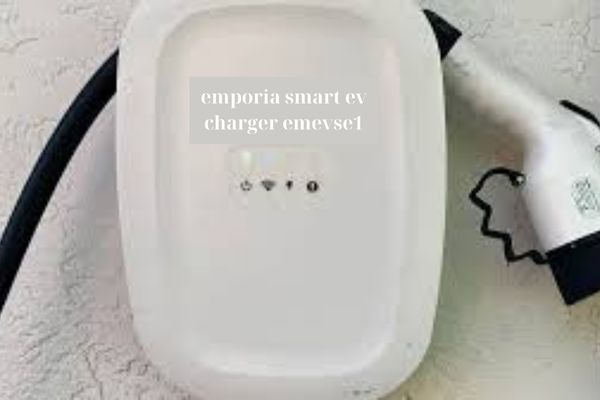
Future Outlook and Conclusions
We will provide a comprehensive future outlook for electric vehicle (EV) chargers, with a specific focus on Emporia chargers, and conclude with thoughtful recommendations and buying advice.
Recommendations and buying advice
Summary of Benefits: Highlight the key advantages of using Emporia chargers, such as affordability, high efficiency, smart charging features, and integration with home energy management systems. These benefits make Emporia chargers suitable for environmentally conscious consumers looking to optimize their energy usage.
Potential Drawbacks: Discuss any limitations, such as compatibility issues with certain vehicle models, potential higher upfront costs compared to basic chargers, or the need for a stable internet connection to utilize all smart features.
Buying Recommendations Based on User Needs
For users primarily concerned with cost, recommend the most basic Emporia model that meets the minimum necessary specifications for their vehicle.
For tech-savvy users, suggest a model with advanced features like app integration, scheduling, and energy usage reports.
For users with sustainability priorities, point towards models that best integrate with renewable energy systems.
Updates and future developments
- Expected Updates: Provide insights into anticipated upgrades in Emporia charger technology, such as improvements in charging speed, energy efficiency, or software updates that enhance user interface and functionality.
- Enhancements in Emporia Chargers: Discuss potential future features like enhanced diagnostics, better integration with smart home devices, or more robust grid interaction capabilities.
- Future Market Trends: Analyze broader trends in the EV charging market, such as the move towards ultra-fast charging, integration with decentralized renewable energy sources, and the development of chargers that can feedback electricity to the grid (vehicle-to-grid technologies).
This overview and detailed analysis help buyers understand the evolving landscape of EV chargers and make informed decisions based on their specific needs and the future direction of charging technology. By keeping up-to-date with technological advancements and market trends, users can select products that will offer long-term benefits and support the transition to more sustainable transportation solutions.

Henry Michael is a leading expert in EV charging station research, specializing in innovative solutions for electric vehicle infrastructure. With a passion for sustainability and technological advancement, he is dedicated to advancing the accessibility and efficiency of EV charging worldwide.

